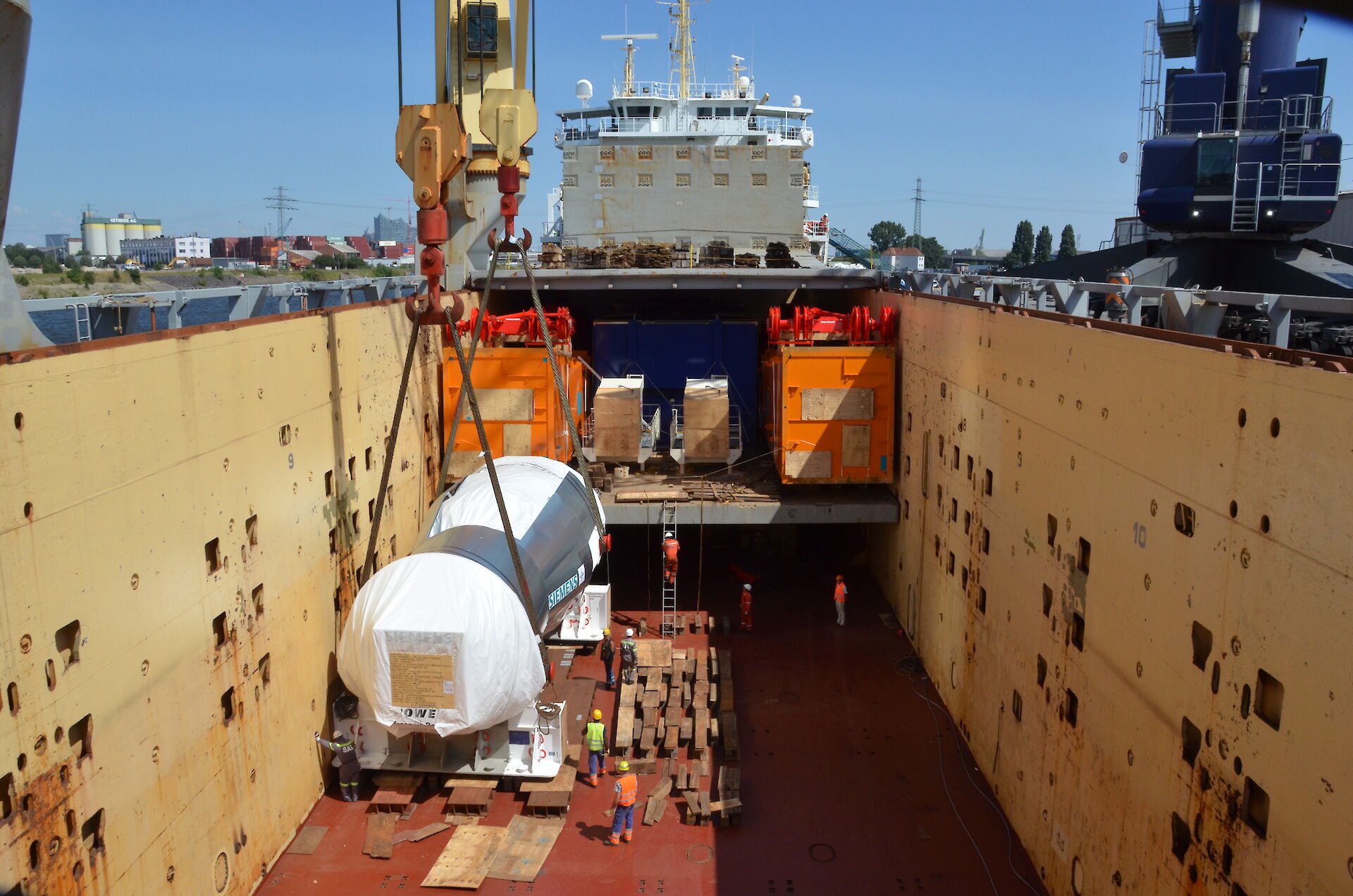

23 Jul 2014 18:25
After a six-day journey from Berlin via the Elbe-Havel Canal and the Elbe-Seiten Canal on an inland waterways vessel, a 440-ton gas turbine manufactured by Siemens AG (Type SGT5-8000H) arrived at Hamburg’s multi-purpose Buss Hansa Terminal on 23 July. From here, the turbine will be loaded onto the heavy-cargo freighter MS ANNEGRET owned by the shipping company SAL using the ship's on-board cranes. It will then be transported to the customer, the TNB Prai power station in Malaysia. This will be the biggest gas-fired power station in Southeast Asia, with an output of about one gigawatt and an efficiency of more than 60 per cent. It is scheduled for completion by 2016.
On 18 July, the turbine measuring 13.2 metres in length, 5 metres in height and 5.5 metres in width was initially loaded onto a self-propelled modular transporter at the Siemens plant in Berlin-Moabit by the company Berliner Hafen- und Lagerhausgesellschaft mbH (BEHALA). The modular transporter then carried the turbine via the company’s own loading ramp at the Charlottenburg Canal onto the specialised heavy-cargo RoRo barge URSUS. This method eliminates the need for costly and inflexible tandem lifts using mobile cranes. In a pushing unit powered by the pushing tug EDDI, the turbine was sent on its way to Hamburg. Using inland navigation for such heavy-cargo transports to the next transhipment point lessens the burden on roads and bridges along the way.
Siemens AG is using inland navigation to move its machinery and equipment components on a regular basis. “In feeder services to and from Hamburg, inland waterways are particularly suited to heavy-lift transports like this gas turbine,” said Michael Westhagemann, CEO Region North at Siemens AG. “For us the benefits of inland navigation are primarily the high transport capacity, the low environmental footprint, and the value for money based on ton-per-kilometre performance. What’s more, frequently neither road nor rail represents a viable alternative for the transport of oversize and extra-heavy cargo due to clearances required,” explained Westhagemann.
HHM/Marc Ihle